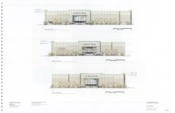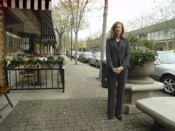Economic Vitality = Quality of Life
Economic Vitality = Quality of Life



It is understood that economic vitality plays a crucial role in each community's quality of life, from infrastructure and construction of residential and commercial properties to the availability of arts facilities, sports fields and other amenities that attract and retain residents. Every several years, an Economic Development Strategic Plan is commissioned in order to support Pleasanton's competitive advantages, mitigate its weaknesses and link the goals of ongoing economic development to the goals of the General Plan. As Pleasanton's Economic Vitality Committee (EVC) presented its revised Strategic Plan to the City Council for adoption on February 6, the city's business community was, and is, thriving, maturing and adding new dimensions to the area's quality of life.
During the past two years, the committee has met to discuss economic trends and to formulate goals and policies for Pleasanton's future economic growth. They have assessed the City's business climate, reviewed issues that may impact that growth and formulated suggestions and recommendations to be presented to the City Council with the sole purpose of maintaining a strong local economy.
"The Economic Vitality Committee is a tremendous resource for both the City Council and the community. The members bring a breadth of knowledge and perspectives to the table, allowing them to make thoughtful and well-formulated recommendations focused on maintaining Pleasanton's highly-valued quality of life," says the City's Economic Development Director Pamela Ott.
"We often hear about Pleasanton's approaching build out, as though build out were a goal which, when reached, means we're finished," adds Ott. "As far as the EVC is concerned, that couldn't be further from the truth. A review of the Economic Development Strategic Plan goals will illustrate how many opportunities exist and how much is still to be accomplished."
Goal 1: Maintain and Expand Pleasanton's Economy. Pleasanton's "crossroads" location, accessible to innovation centers of Silicon Valley and San Francisco as well as a growing Central Valley workforce, continues to attract a diverse economy spanning many business sectors. The principal employers - retail trade, professional/technical services, administrative support, information and finance/insurance - represent only half of Pleasanton's jobs, with the remainder distributed among diverse industry groups.
The City's diverse economy needs attention to foster its growth. Smaller firms require affordable, suitable space for their current needs as well as the ability to expand locally. Larger firms need flexible space, access to a skilled workforce, efficient infrastructure that includes transportation, and support services from local government.
Ott noted that Pleasanton has demonstrated that, even with recent changes in the economy, it has retained its allure for large corporate relocations. Oracle has committed to maintaining a base here in Hacienda and two other large corporate users, Kaiser (IT) Department and State Compensation Insurance Fund, both have established a large presence in Hacienda as well. "Kaiser IT represents another very desirable addition to our local business community. As an economy, we were fortunate to have the space to accommodate Kaiser, along with the workforce, infrastructure and access to public transportation that the company needed."
Goal 2: Maintain and Enhance Pleasanton's Fiscal Revenues. In Pleasanton's General Fund, two of the City's larger revenue sources - sales taxes from both retail and business-to-business sales and hotel taxes - currently account for more than 28 percent of total revenues. The trend of declining tax revenues and increasing expenditures for personnel, utilities, etc. can affect dramatically Pleasanton's ability to fund services and maintain the overall quality if life for its residents. This goal addresses the relationship between business vitality, economic development and the key General Fund revenue sources of taxes from sales and taxes from hotels.
"The good news here is that, today, Pleasanton's commercial vacancy rate is about 13.5 percent citywide, as opposed to about 20 percent two years ago," Ott states. "This can only mean positive things for future economic vitality."
Goal 3: Promote Tourism, Cultural and Recreational Activities. Pleasanton's combination of cultural, recreational and tourist activities include a vibrant Tri-Valley wine industry, the Alameda Country Fairgrounds and Downtown Pleasanton.
"This area is rich in potential for all three of the goal's stated categories. To mention just one project, the Firehouse Arts Center on Railroad Avenue in downtown will be a tremendous amenity to our community and will result in additional spending at existing hotels, restaurants and retail stores. I think that the Arts Center will be a catalyst for economic growth along Railroad Avenue and the surrounding side streets as well."
Goal 4: Strengthen Pleasanton's Retail and Entertainment Sector. In 2004, retail was the largest employment category in the City, representing more than 12 percent of total jobs. The emerging trend converging retail and entertainment so that retail experiences are entertainment further enhances Stoneridge Mall's influence on Pleasanton's image throughout the region.
"We are absolutely thrilled to have P.F. Chang's and The Cheesecake Factory here. They are fabulous additions to the Mall and the whole community," Ott smiles. "We trust plans for the new Nordstrom will be back on track soon as that new store will offer shoppers an appealing new experience and, at the same time, open up more than 100,000 square feet of retail space in its old location.
"The Stoneridge Mall situation is a perfect example of the fluidity of the economic vitality arena. The upside for us is that everything about Pleasanton is quality. It's where people want to work and businesses want to locate."
Goal 5: Increase Housing Opportunities for Pleasanton's Workforce and Residents. To support a healthy, sustainable economy, a local housing market needs to offer homes at a range of prices and configurations. The result is a community that is accessible to young workers, attractive to families and one that enables residents to "age in place."
"This is an issue that the EVC is keenly aware of and it shares its perspective with the City Council and the community whenever there's an opportunity," continues Ott. "They acknowledge that this is an important part of the 'healthy local economy' equation.
"We are pleased that the Pleasanton Downtown Association is working with the City to create housing in the downtown area, knowing that additional residential units will help to keep the downtown area vibrant. Live/work units could be part of the future, along with single family homes, condominiums or apartments."
Housing is also a key component of the city's General Plan update. This update will be an important blueprint for housing availability and choices, which are key to meeting employment needs.
Goal 6: Integrate Economic Development, Land Use and Transportation Decisions to Create A Sustainable City. Integration of economic development, land use, and transportation is critical in achieving the intended effects in all policy areas. This goal addresses creative means to balance these factors and encourages creative solutions for traffic and environmental impacts of new development.
"Our second BART station is due to open in late 2008 or early 2009," Ott says. "In the past, we understood that the Pleasanton side of the property would be developed as commercial space. In working through the BART plan this time, the developer approached the City about building an apartment complex with some density on our side of the freeway. This is compatible with our vision of housing near transportation hubs in order to help mitigate traffic."
"As I mentioned, build out is just a word. It may describe a milestone, but it is certainly not a limitation. The opportunities are endless, as anyone who walks around downtown or drives through our business parks and shopping centers can see. We are entering the next phase of Pleasanton's evolution, which will be filled a different kind of development and change, but it will happen with the same energy, creativity and excitement that we have experienced for the past several decades.
"Going forward, businesses that are interested in playing a part in the growth and prosperity of Pleasanton are always welcome to attend Economic Vitality meetings and or meet with me to discuss the current Economic Development Plan." Pamela Ott, Economic Development Director, mat be contacted by phone at (925) 931-5040 or email at pott@ci.pleasanton.ca.us.
The Economic Vitality Committee who, in conjunction with Economic Development Director Pamela Ott, prepared the Economic Strategic Plan, is comprised of businesspersons from various market segments. The committee members are appointed by the City Council to serve as city advisors because they represent diverse business segments and possess good economic vitality information. Serving currently on the EVC are:
- Robert Coackley, telecommunications
- Chris Crabtree, commercial real estate
- Teralyn Fredricks, retail business
- Chris Grant, medical device
- Pam Hardy, residential builder
- Juanita Haugen, educational community
- Mark Heidohrn, environmental community
- Douglas Lowe, Tri-Valley Convention and Visitors Bureau
- John Mahoney, infrastructure
- Sharrell Michelotti, Chamber of Commerce
- April Mitchell, nonprofit organization
- Carl Palowitch, citizen-at-large
- James Paxson, business park
- Ralph Sabiel, commercial services
- Dave Walden, professional services
- Judy Wheeler, Pleasanton Downtown Association
- Sima Yazdani, software
Also in this issue ...
- Robert Half International Expands Hacienda Presence
- Healthcare, Biotech Industries Depend on Altamont Solutions
- Business Bits
- Executive Profile: Kim Fox: A Lifetime Commitment to Women's Wellness
- Agilent Technologies Measures Up
- Adecco Serves Multiple Industries' Staffing Needs
- Economic Vitality = Quality of Life
- Register Now for Pleasanton's Poetry, Prose and Arts Festival
- Discount Northstar and Sierra Lift Tickets Available Online
- Tri-Valley One-Stop Career Center Helps Local Businesses Meet Employment Needs
- Hacienda Index
- Calendar




